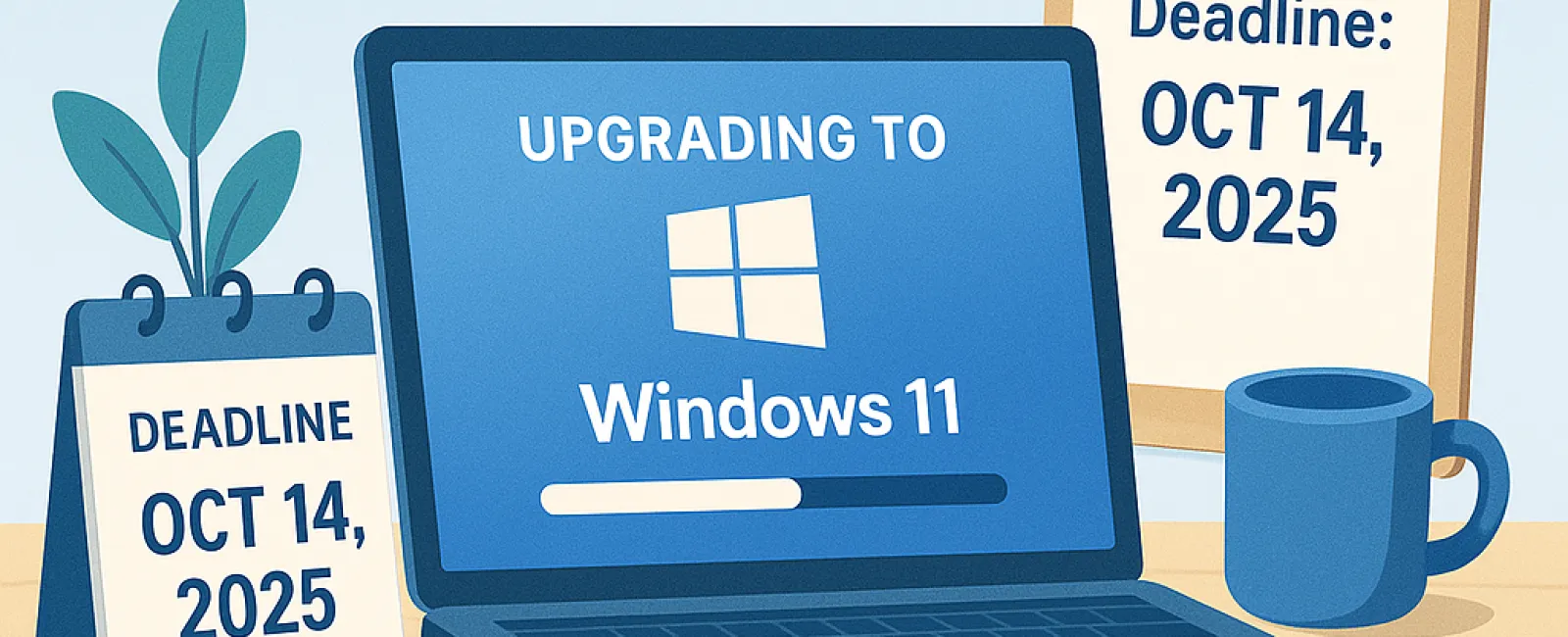June 23, 2025
If you're still using Windows 10 on your business machines, the deadline is approaching fast.
On October 14, 2025, Microsoft will officially end support for Windows 10. This means no more security updates, bug fixes, or technical assistance.
What business owners need to realize is that the cost of waiting goes beyond eventually needing to upgrade.
It's about the risks and expenses that come with delaying the upgrade.
"We'll Deal With It Later" Is An Expensive Strategy
Upgrading every machine in your business might not be a fun expense, so it's tempting to put it off—until something goes wrong.
Here's what procrastination really costs you:
1. You're Operating Without A Safety Net
After Microsoft stops updating Windows 10, any new security vulnerabilities become your problem.
Hackers target outdated systems because they're easier to breach. It's like locking the front door but leaving all the windows open.
One security breach could cost thousands of dollars—or even jeopardize your entire business.
2. Software And Hardware Compatibility Issues
Many business applications like accounting software, CRMs, and industry-specific platforms are already dropping support for Windows 10.
If your systems fail during a project or crash in the middle of a client demo, what does that cost your business?
It's not just software—new printers, peripherals, and security tools may also stop working properly with an outdated operating system.
3. Lost Productivity
Old systems run slower, crash more often, and frustrate your employees. Even small delays add up, reducing efficiency, lowering morale, and hurting your competitiveness.
If each employee loses 10 to 15 minutes daily due to tech issues, think about what that totals over a month.
4. Emergency Upgrades Are Always More Expensive
Waiting until systems fail or your team can't work doesn't just cause stress, it triggers costly emergency spending:
- Rush hardware orders
- Expensive IT labor fees
- Business interruptions during replacements
A bit of planning now can save a lot of scrambling—and money—later.
5. You're Risking Compliance Violations
If your business handles sensitive data or follows regulations like HIPAA or PCI-DSS, using unsupported systems can lead to fines or lawsuits. Most regulatory standards require up-to-date security, which Windows 10 won't provide after October 2025.
What Smart Business Owners Are Doing Now
They're getting ahead of the deadline by not only upgrading devices but also:
- Auditing which devices need replacing
- Streamlining tools and software
- Strengthening cybersecurity measures
- Planning IT budgets more effectively for 2025
How To Make The Transition Smooth
We recommend the following steps:
- Run a compatibility check—Not all machines can upgrade to Windows 11. Identify which need replacement.
- Audit your applications—Ensure your essential software works on Windows 11 or newer systems.
- Budget for hardware now—Avoid supply chain delays later.
- Partner with an IT provider—We can manage the entire upgrade process with no downtime and no surprises.
Don't Wait Until October To Panic
Delaying until the last minute will cost more in money, stress, and lost opportunities. We're helping small businesses upgrade smartly: with planning, smooth execution, and a focus on future growth.
Click
here or give us a call at (951) 405-6873 to book your FREE 15-Minute Discovery Call and we'll help you identify what
needs upgrading, what can stay and how to build a transition plan that won't
disrupt your business before the deadline.



